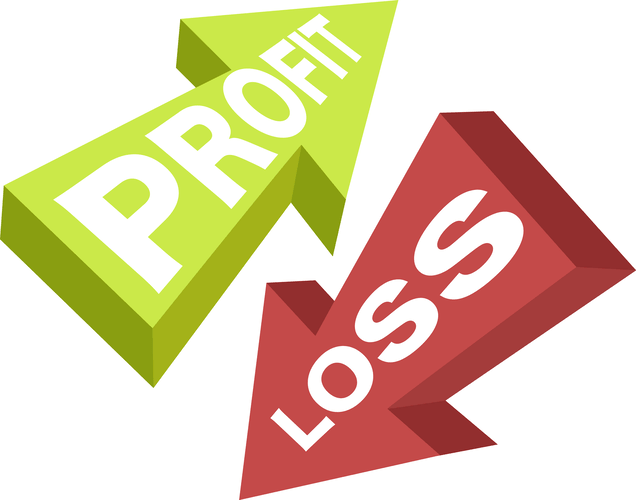
Investors want to know how healthy the core business activities are to gauge the quality of the company. The concept of GP is particularly important to cost accountants and management because it allows them to create budgets and forecast future activities. This means if she wants to be profitable for the year, all of her other costs must be less than $650,000. Conversely, Monica can also view the $650,000 as the amount of money that can be put toward other business expenses or expansion into new markets.

What is a good gross profit margin for a small business?

To calculate operating profit margin, subtract the cost of goods sold (COGS), operating expenses, depreciation, and amortization from total revenue. You then express the result as a percentage by dividing by total revenue and multiplying by 100, similar to gross and net profit margins. In simple terms, gross profit margin shows the money a company makes after accounting for its business costs. This metric is usually expressed as a CARES Act percentage of sales, also known as the gross margin ratio. A typical profit margin falls between 5% and 10%, but it varies widely by industry. Gross profit margin, also known as gross margin, is one of the most widely used profitability ratios.
How to calculate the return on equity

Margin ratios explain how well the plumber generates profits from each Rand of sales. GM had a low margin and wasn’t making much money one each car they were producing, but which ratio is found by dividing gross margin by sales? GM was profitable. In other words, GM was making more money financing cars like a bank than they were producing cars like a manufacturer.
How Can a Company Improve Gross Profit Margin?
- The aim is to steadily increase your gross profit margin as your business gets established.
- Nonetheless, the gross profit margin should be relatively stable except when there is significant change to the company’s business model.
- The cost of sales in Year 2 represents 78.9% of sales (1 minus gross profit margin, or 328/1,168); while in Year 1, cost of sales represents 71.7%.
- Company A sells sheds and brings in a total of $50,000 for a given period.
- A positive gross profit ratio shows that you’re successfully covering your operating costs and generating a profit.
Meanwhile, return ratios measure how well your company is generating a return for shareholders. (4) Medical membership represents the number of members covered by the Health Care Benefits segment’s insured and ASC medical products and related services at a specified point in time. Management uses this metric to understand variances between actual medical membership and expected amounts as well as trends in period-over-period results. This metric provides management and investors with information useful in understanding the impact of medical membership on the Health Care Benefits segment’s total revenues and operating results. The profitability ratios often considered most important for a business are gross margin, operating margin, and net profit margin.
How to calculate gross margin (formula)
- This metric provides management and investors with information useful in understanding the impact of medical membership on the Health Care Benefits segment’s total revenues and operating results.
- Unfortunately, $50,000 of the sales were returned by customers and refunded.
- In other words, it shows how efficiently a company can produce and sell its products.
- This adjustment reflects the fact that these prescriptions include approximately three times the amount of product days supplied compared to a normal prescription.
- The ratio can rise due to higher net income being generated from a larger asset base funded with debt.
- The income statement in an external financial report discloses gross margin and operating profit, or earnings before interest and income tax expenses.
If a business converted all current assets into cash and used the cash to pay all current liabilities, any cash remaining is working capital. The capital investment balance is the Rands you’d need to maintain and replace assets over time. Gross margin can be calculated in two ways—by dividing gross profit by net sales or by subtracting the COGS from the company’s net sales.
Gross Profit vs. Gross Profit Margin

Compare companies’ gross profit margins within the same industry to identify which companies are performing well and which are lagging. Gross profit margin is one of the key metrics that analysts and investors use to assess a company’s financial health and efficiency. Companies use gross profit margin to identify areas for cost-cutting and sales improvement.
Profit Margin
- The terms gross margin and gross profit are often used interchangeably but they’re two separate metrics that companies use to measure and express their profitability.
- The more assets that a company has amassed, the greater the sales and potential profits the company may generate.
- The capital investment balance is the dollars you’d need to maintain and replace assets over time.
- And it’s tied closely to current economic conditions and the unemployment rate.
- Margin is a very important factor in the profit performance of a business.
- Margin ratios give insight, from several different angles, into a company’s ability to turn sales into profit.
Occasionally, COGS is broken down into smaller categories of costs like materials and labor. This equation looks at the pure dollar amount of GP for the company, but many times it’s helpful to calculate the gross profit rate or margin as a percentage. Return on equity focuses on the dollars that shareholders invest in, rather than assets purchased. Return on equity measures how effectively a company uses shareholder law firm chart of accounts equity to generate profits. The return on equity formula divides net income by the average shareholder’s equity.